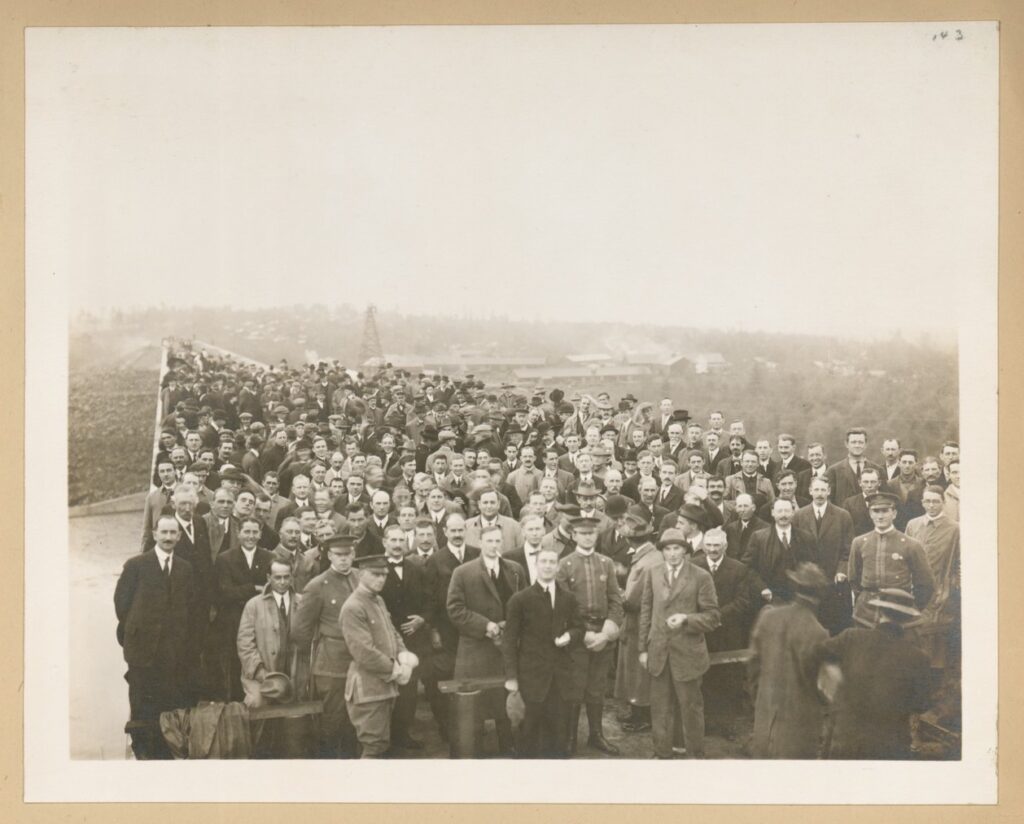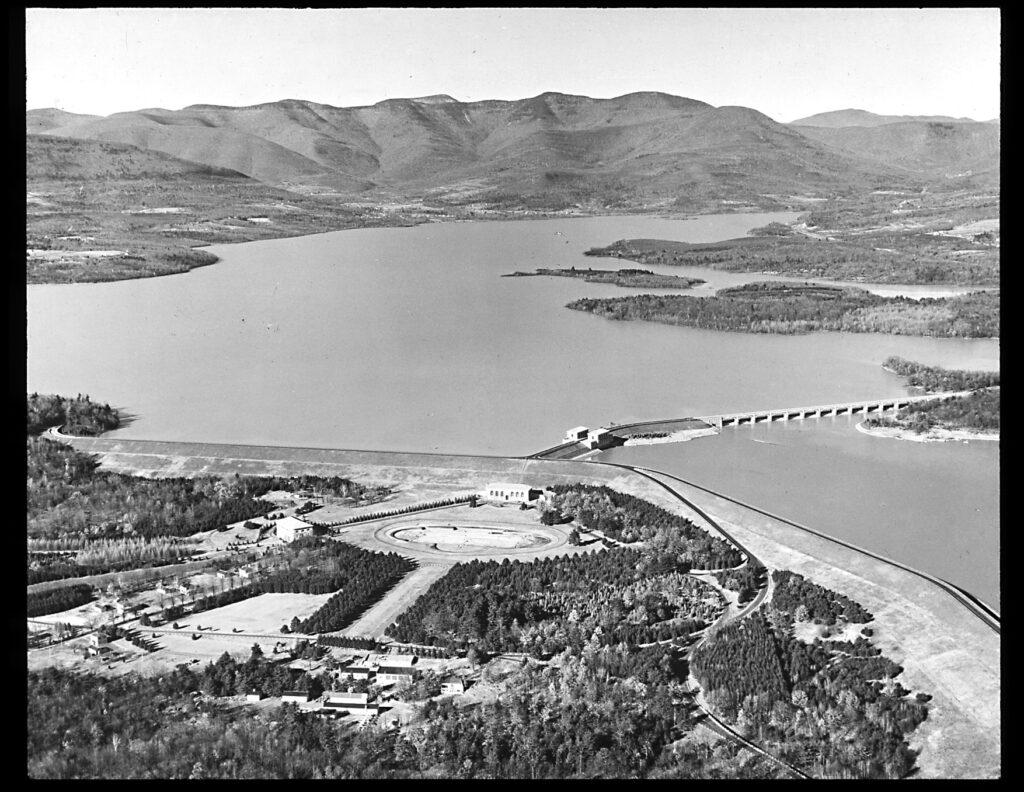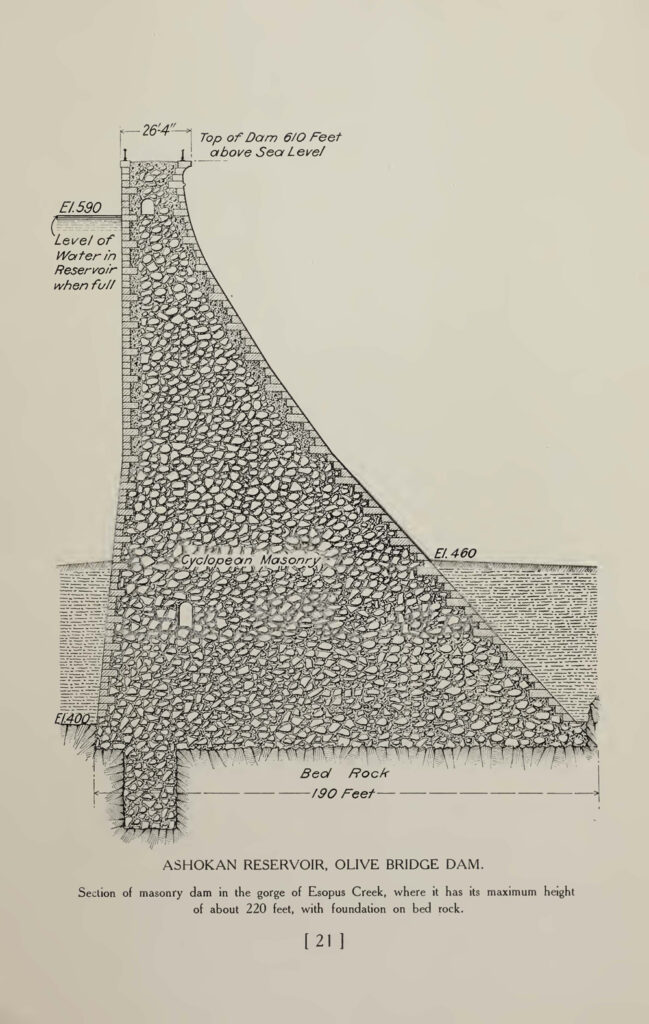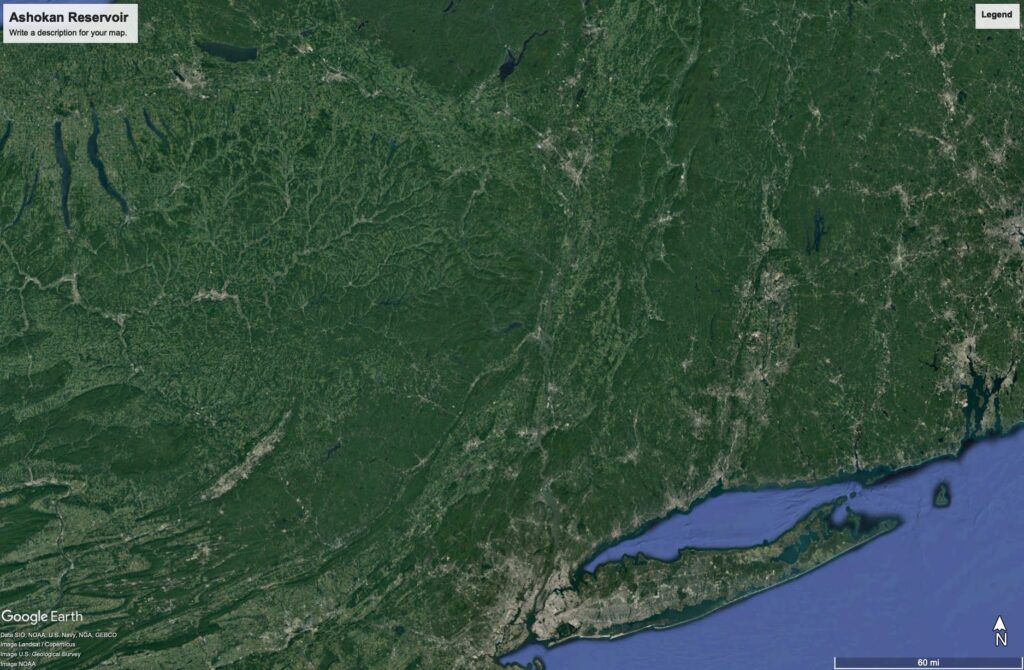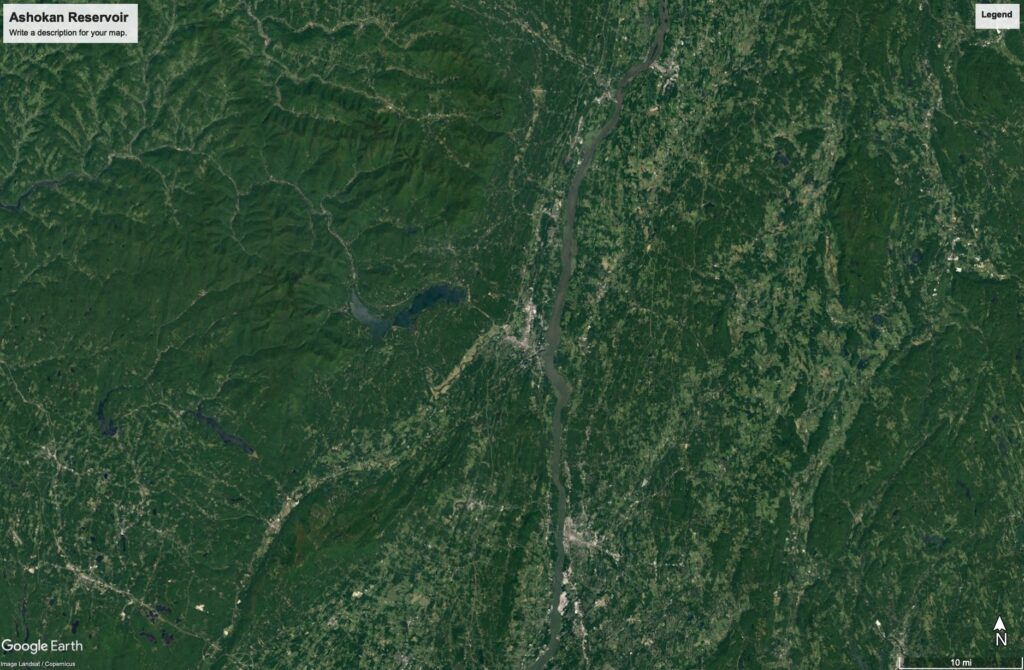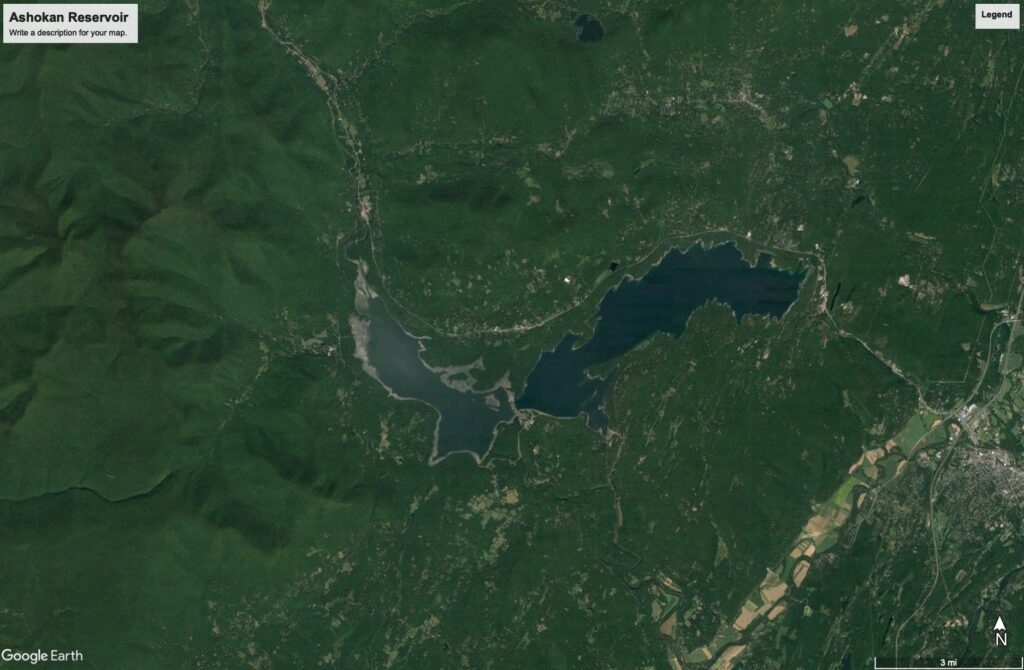Building The Ashokan Reservoir
In the Catskills watershed, the Ashokan Reservoir would hold 122.9 billion gallons of water at full capacity and would supply approximately 40% of New York City’s daily drinking water needs in non-drought periods. It was constructed under the auspices of the New York City Board of Water Supply (BWS) beginning in 1907. Its weirs, dikes, and the Olive Bridge Dam backed up Esopus waters for twelve miles, necessitating the removal of homes, farms, businesses, churches, schools and other structures throughout the valley. 2,350 residents were displaced as four hamlets were flooded and eight others were relocated. Many of these residents were not paid the full value of their property and were given two months to uproot their lives and move elsewhere. From the reservoir, water entered into the Catskill Aqueduct and headed south through mountains, over 163 miles of terrain, and under the Hudson River to the Kensico Reservoir in Yonkers, NY, which provided a safety net of two weeks water supply for New York City residents.

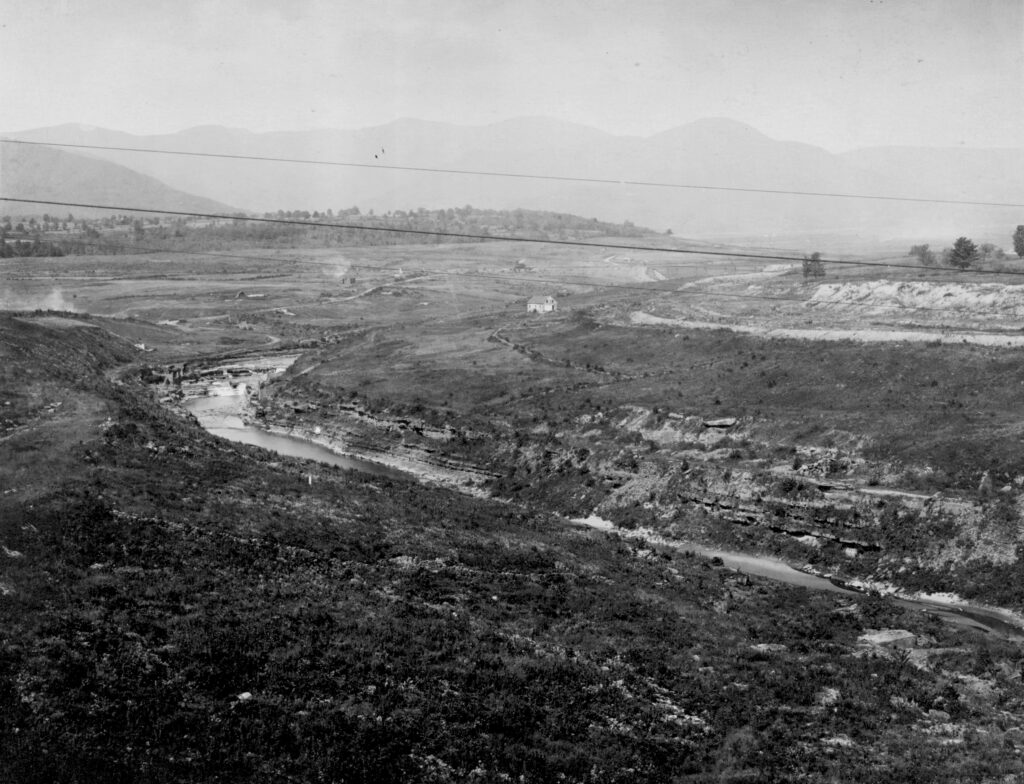
(Above) Here, the land that now forms the basin of the Ashokan reservoir has been cleared, but not flooded. The image above shows the landscape in transition, illustrating the immensity of this project that transformed life and land in parts of the Catskill region.
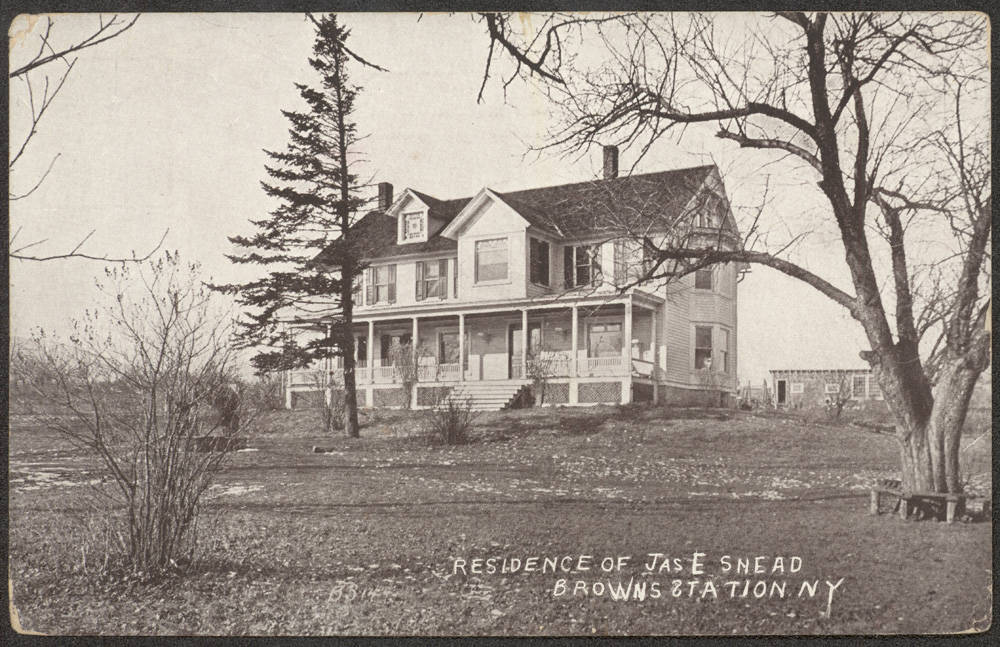
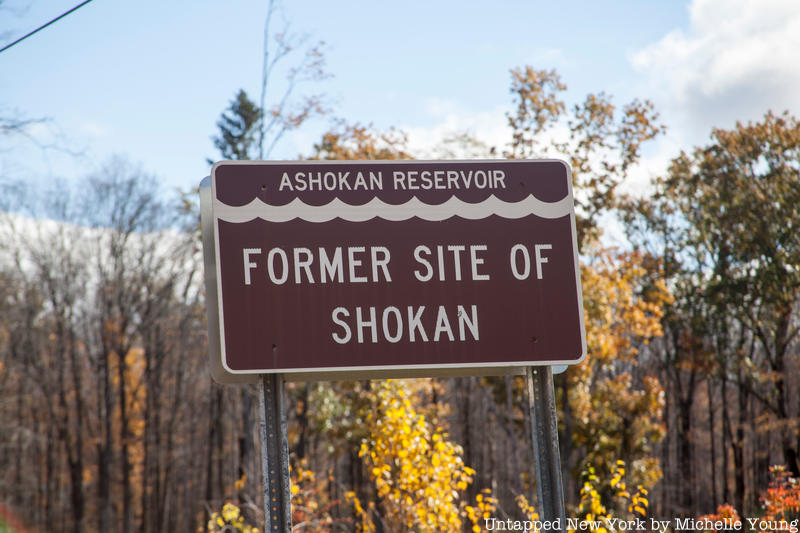
After the construction of the Ashokan reservoir, some towns, like Brown’s Station, Olive City, Broadhead’s Bridge and Ashton, ceased to exist. Others, like the communities of West Hurley, Shokan, West Shokan, and Boiceville, were relocated.
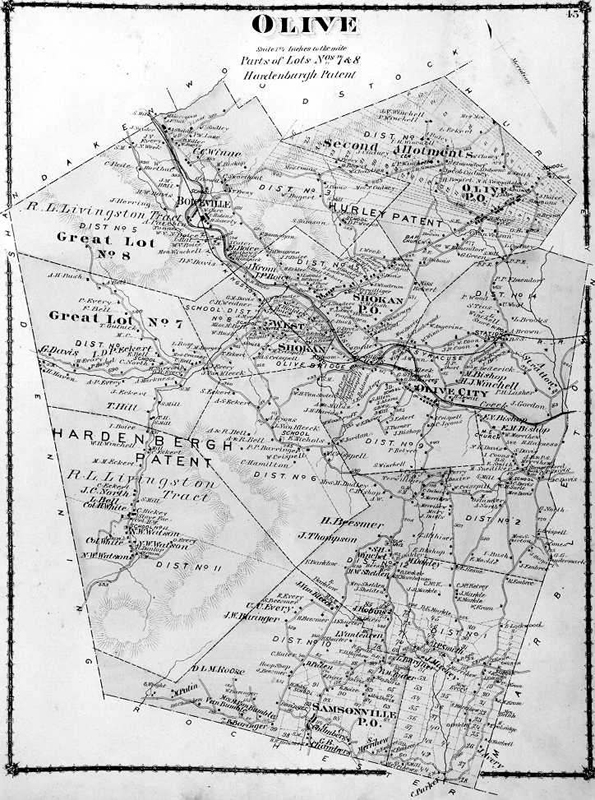
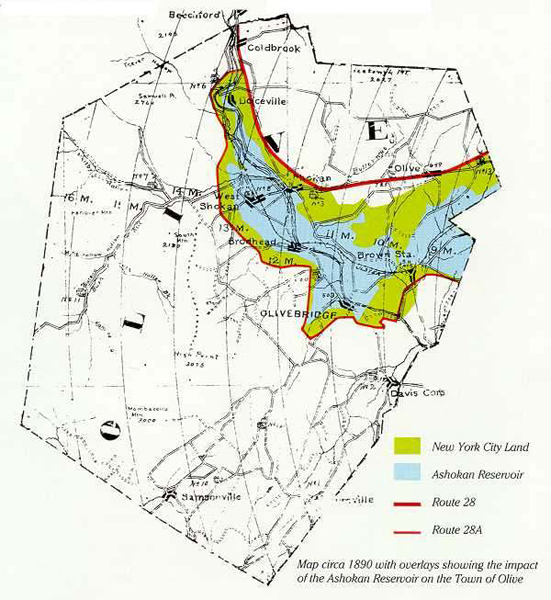
History provided by the Town of Olive
“Nestled in the Catskill Mountains of New York State is 40,000 acres named the Town of Olive. The Ashokan Reservoir geographically divides Olive–north and south. The hamlets around the shoreline are Boiceville, Olivebridge, Samsonville, Krumville, Shokan, West Shokan, and Ashokan.
The passing of the Water Act of 1905 led to the building of the handmade Ashokan Dam on the Esopus Creek and upon its completion in 1916 created the Ashokan Reservoir, a main water supply for the City of New York-Olive’s largest landowner. The demand for pure, clean drinking water for New York City inhabitants changed the course of history for the Town of Olive and still has an impact on everyday life. The Town center and the majority of the Town’s residents were forced from the rich Esopus Valley and relocated to the nearby foothills. In May of 1997 Land Use Regulations, which could become a model for the rest of the country, became effective as a Memorandum of Agreement was signed between Watershed Towns and the City of New York to provide for protection of water quality throughout the New York City Watershed.”
—Source: Town of Olive website. Link.
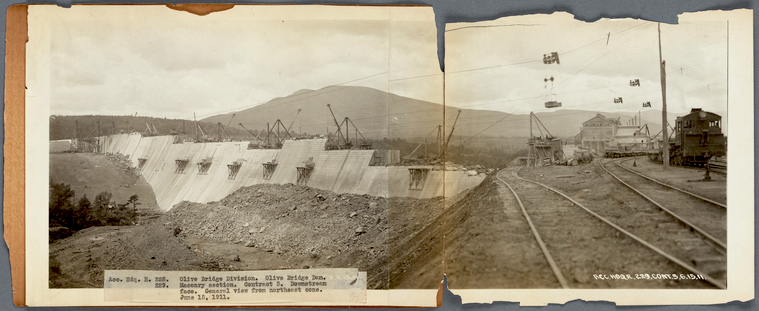
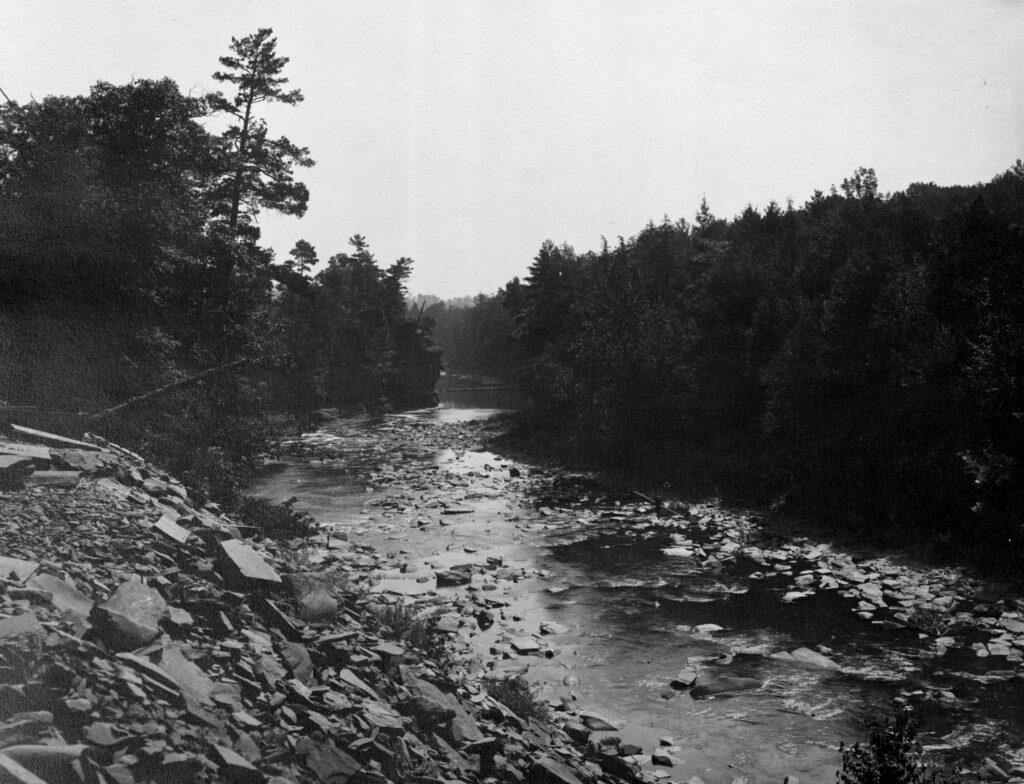
In The Catskills: It’s History and How It Changed America, authors Stephen M. Silverman and Raphael D. Silver quote a report on the opening of the Ashokan reservoir in Hudson Valley Magazine: “Improbably, miraculously, a tiny creek originating high in the Catskill Mountains had been successfully damned to create a thirteen-square-mile drinking fountain for city folk.”
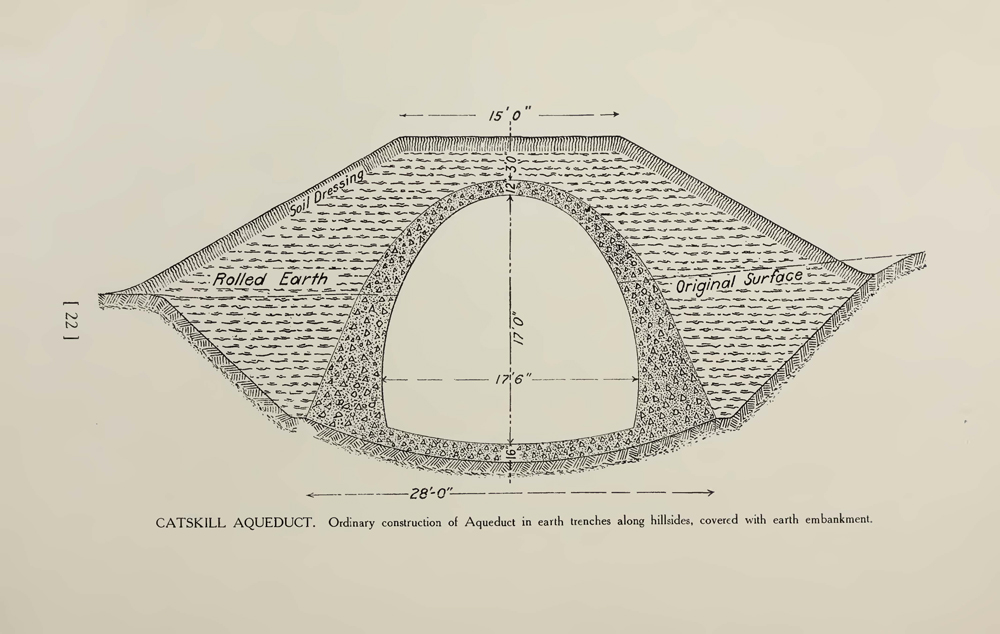
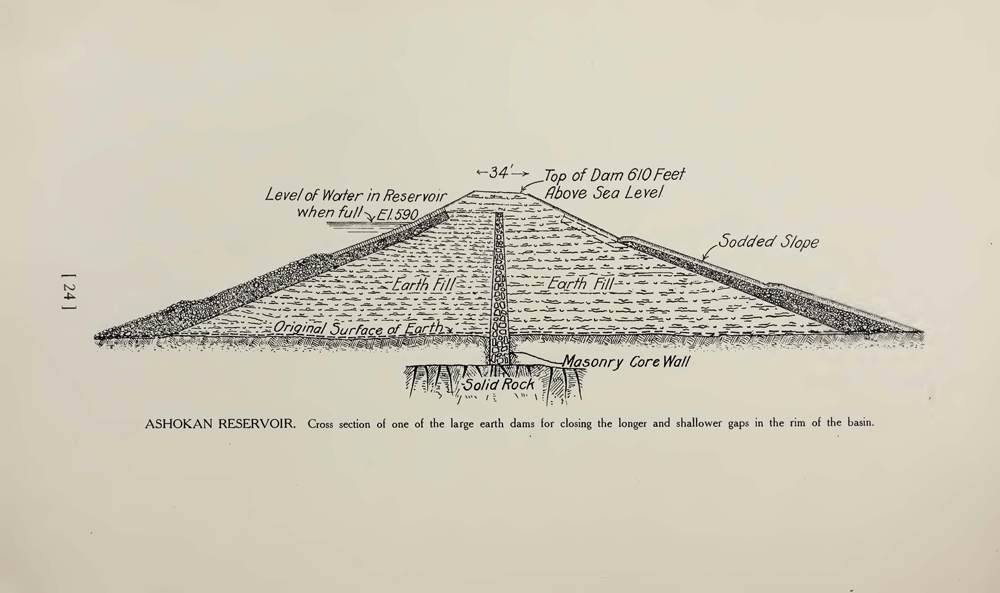
Source: Library of the University of Illinois College of Engineering via Internet Archive. Link.
“On October 11, Acting Mayor Ardolph Kline presided over a special luncheon attended by 500 engineers, officials and invited guests who also toured the dam site and reservoir, a reservoir whose name may be derived from the Indian word “sokan,” meaning “to cross the creek.”
— Liquid Assets by Diane Galusha.
